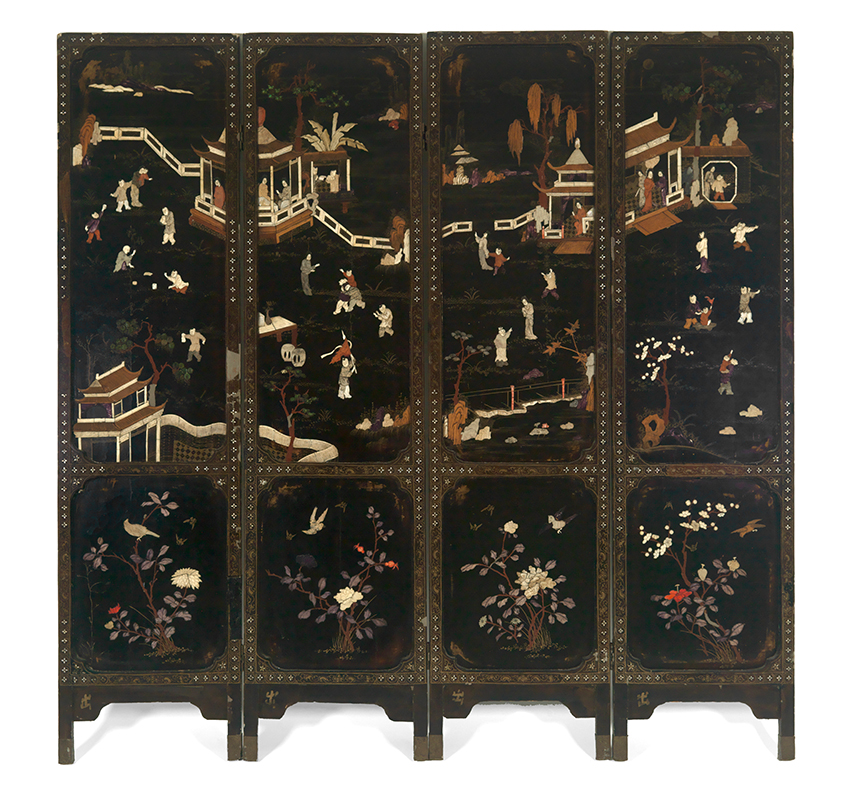
Chinese, 1644-1912 Qing Dynasty, wood, ivory, and semi-precious stones, SC 1987.27
Interactive Art: Engaging Children in Museums
In this blog post, recently graduated Smith student Kandy Wan ‘22, talks about her museum education capstone project (MUX) in which she playfully engages children with art through interactive digital activities.
Traditionally, museums had been a "no touch" environment where the engagement was primarily physical and intellectual. We are no changing towards inclusive spaces, addressing the needs and expectations of all visitors. However, the change focused mainly on physical accessibility. Although these accommodations, such as wheelchair ramps and audio guides, do have a positive impact on children with all abilities, accessibility alone does not engage children in the museum experiences.
Many museums take the step to inclusion and interactivity by designing educational programs or workshops specifically for children in alternative spaces outside the main exhibition. The age-specific and sometimes ability-specific educational programs designated only for children reflect our views on them: children are learners only, and they are too young to engage effectively with the pedagogical aims and technologies. Museums tend to over-provide text and meaning for adult visitors rather than concentrate on the object-audience encounter. We are not offering the tools and agency to children to freely explore the museum on their own. Could museum educators consider alternative models beyond a focus on children’s learning? How can young children’s and adults’ museum experiences be considered collectively? How could museum educators and curators make the main museum spaces more exciting and engaging for all children regardless of needs? With these questions in mind, I designed my project to be an interactive and children-friendly website that could be implemented on an iPad that is placed next to the artwork for children to play with; and it can also be assessed through phones.
One concept that grounds this project is universal design for learning or UDL. UDL implies that difficulty is experienced due to designs that did not anticipate the full range of variability in the population. Therefore, museums could be designed in a way to remove the barriers to independence and social participation for children and, in turn, for all. UDL helps to break the dichotomy between adults and children and/or those with and without disabilities. In other words, museums can anticipate a wide range of multisensory and interactive activities that accommodate a diverse population of visitors. In this way, children are not only viewed as learners who need to be placed in an alternative space outside of the main exhibition but also as experiencers who are capable of understanding, interpreting, and taking the lead in their own adventures in the museums.
The website features a Chinese Folding Screen from the Qing Dynasty. The reason why I chose this screen is it depicts the play activities of Chinese children. And research has shown that children would like activities that they are familiar with.

The whole project has four main interactive activities. The first one is a puzzle game. The puzzle makes children take a close look at the screen.
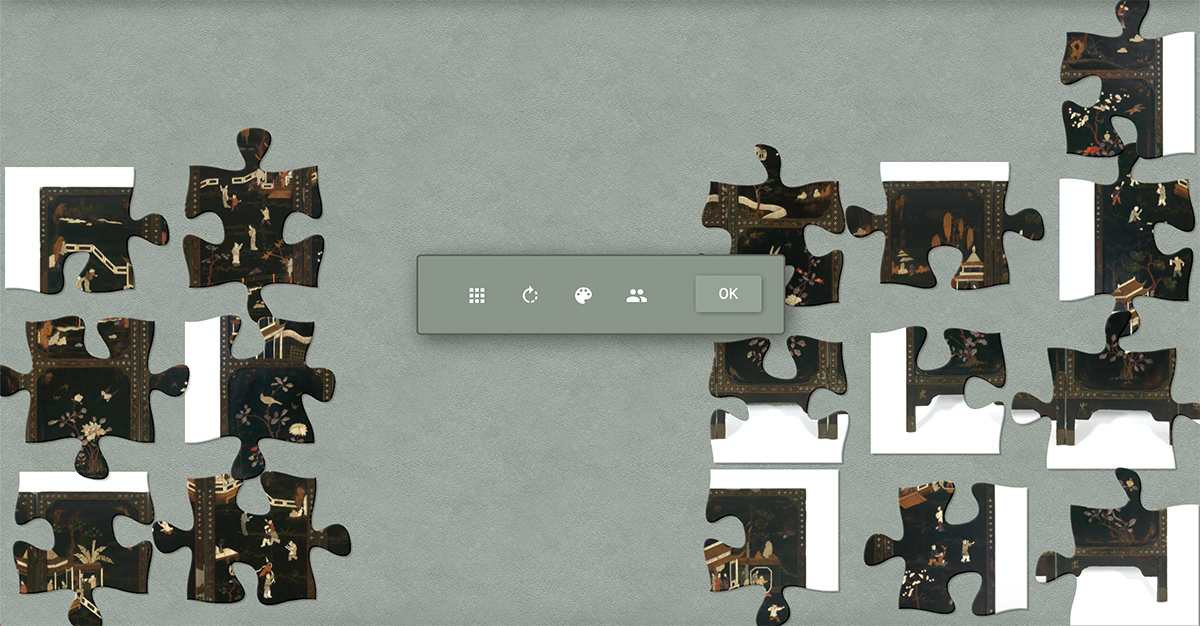
And then, I provided some guided questions, like when the children are tired, take a guess at where they would take a break, and engage children in noticing the spatial arrangement of the screen.
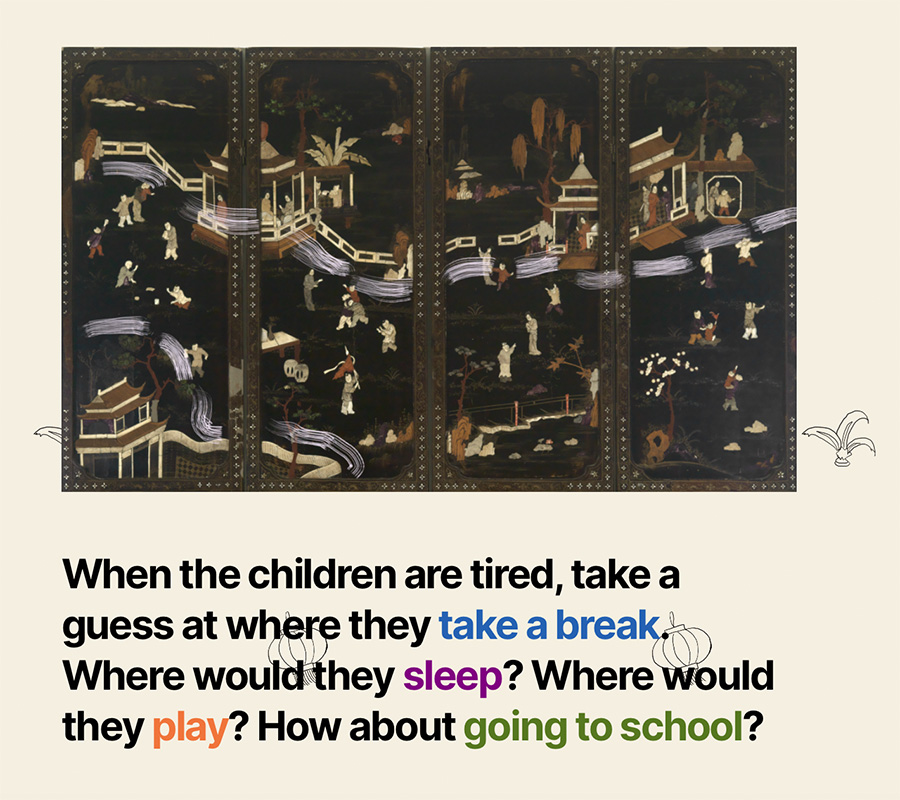
The second activity is drawing. Research has shown that children in general love drawing. And here, children can draw their own play activities and compare what they play with what Chinese children in the Qing dynasty played. I also provided some sample drawings in case they need some references.
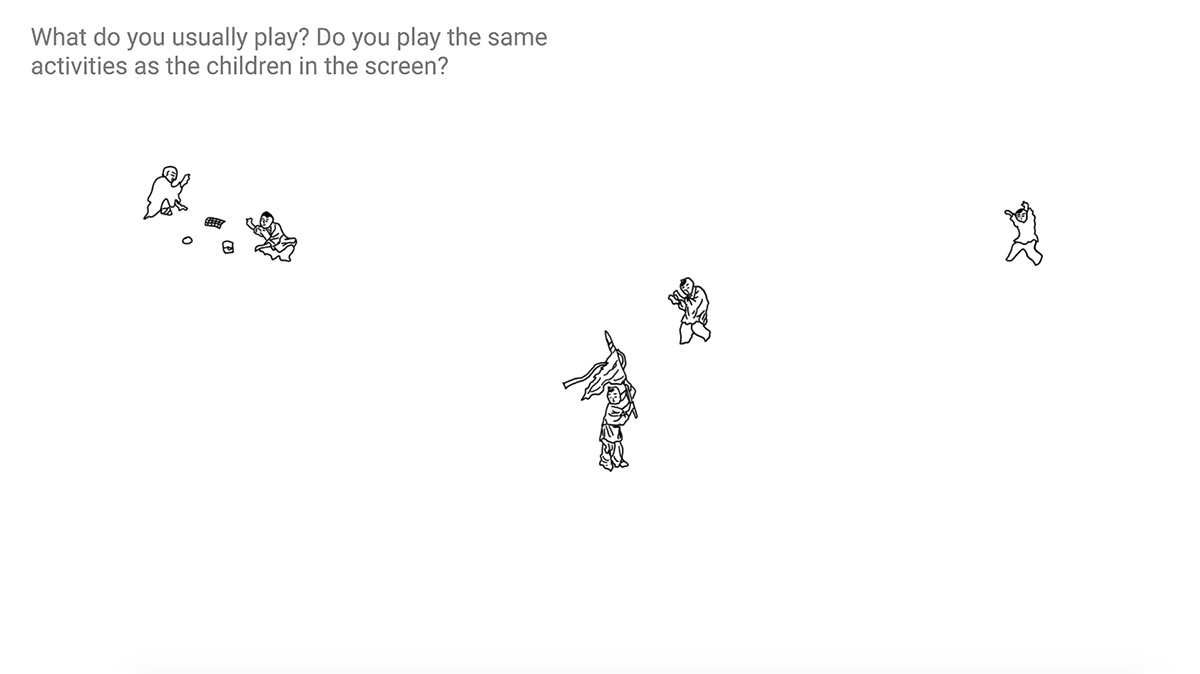
According to a study, moving to the Qing Dynasty, Chinese artists were more interested in the overall atmosphere of the artwork instead of concrete play activities. Thus, here, I would like children to choose one of the emotions that they think best describes the overall atmosphere of the screen. And after they choose one emotion, they can also learn the simple Chinese characters for that emotion.
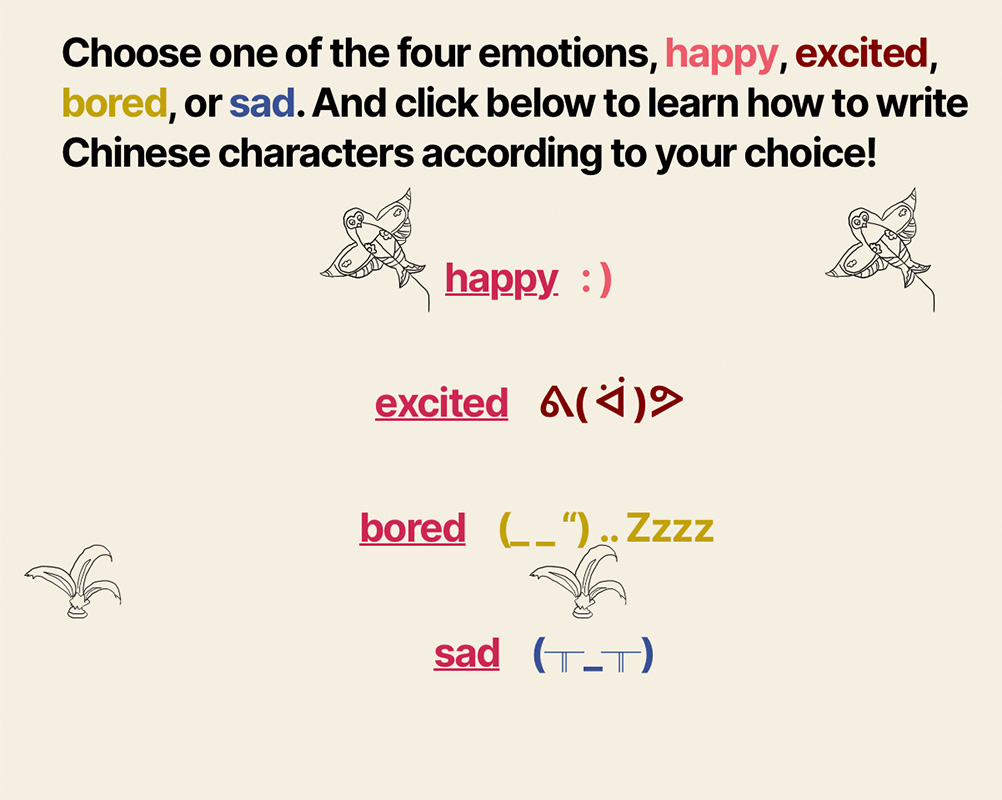
The last activity is about the representation of magpies in Chinese culture. First, the children can play a simple drag and drop activity to recognize what a magpie looks like.
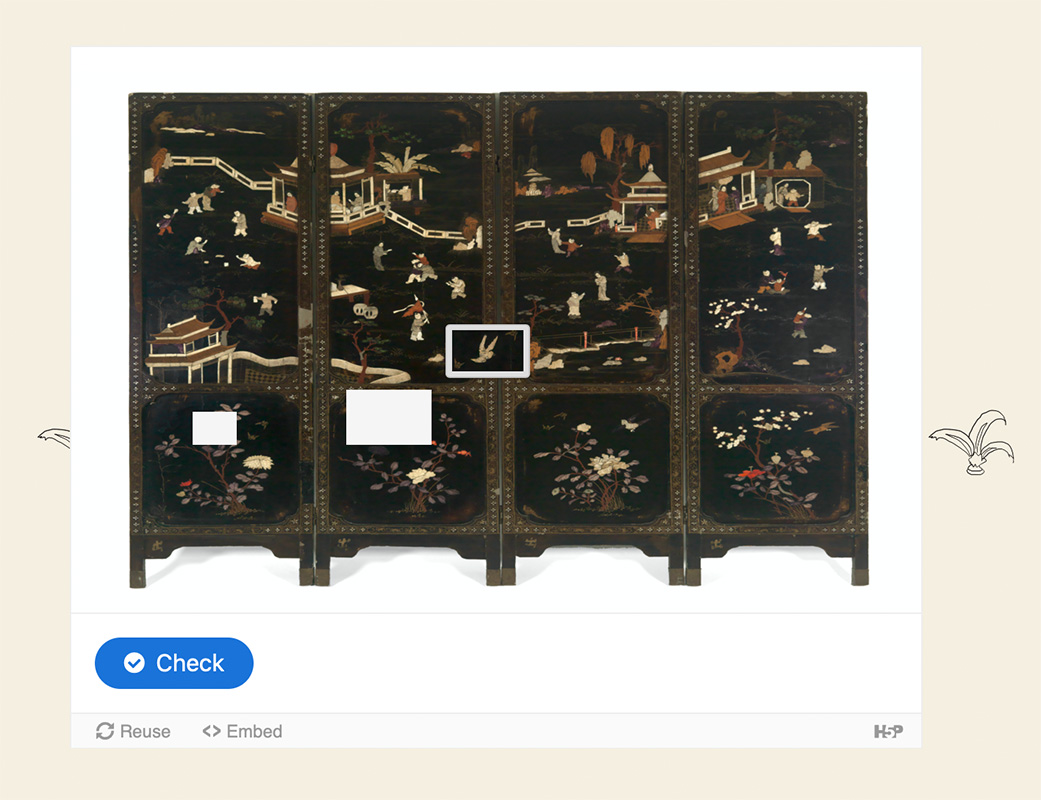
Then, the children can learn how magpies sing and what magpie singing represents in Chinese culture. In Chinese culture, when a magpie sings, it signals good things are about to come.


Through these interactive activities, I wish to empower children to view, apprentice and discuss art. These activities call upon their knowledge, curiosity, lived experiences, imagination, and sensation and invite them to share ideas and feelings with others. Such encounters make children become not only learners but also experiencers in the context of the museums.
Site link: https://sophia.smith.edu/mux300-wan/